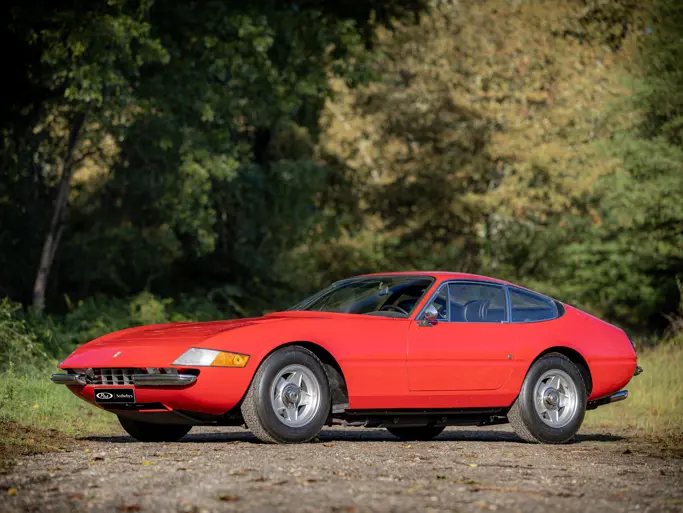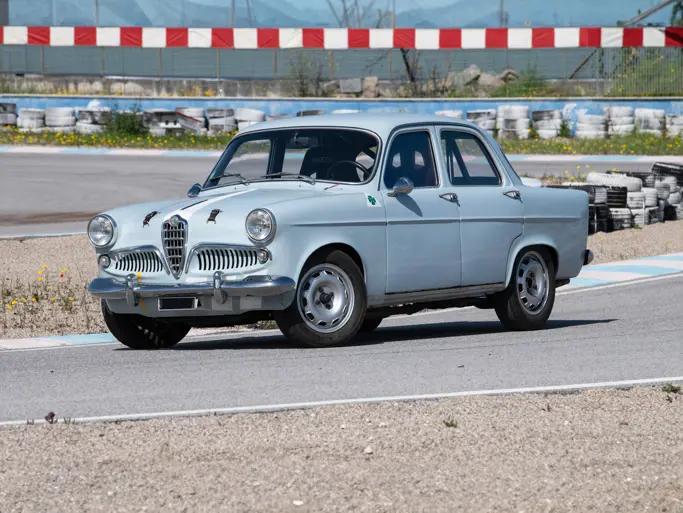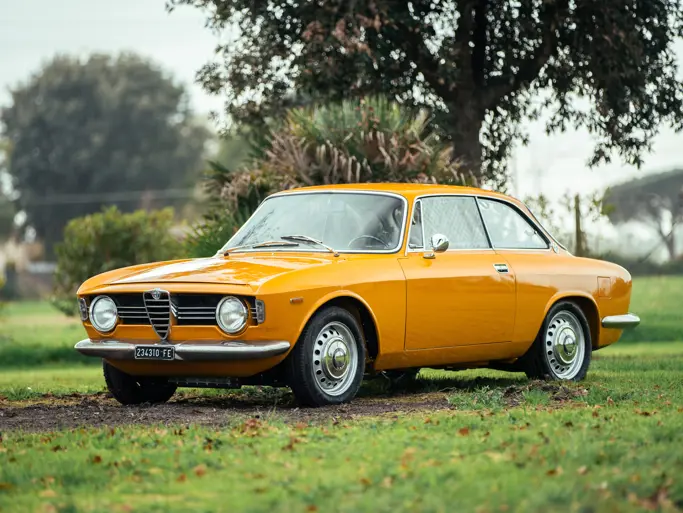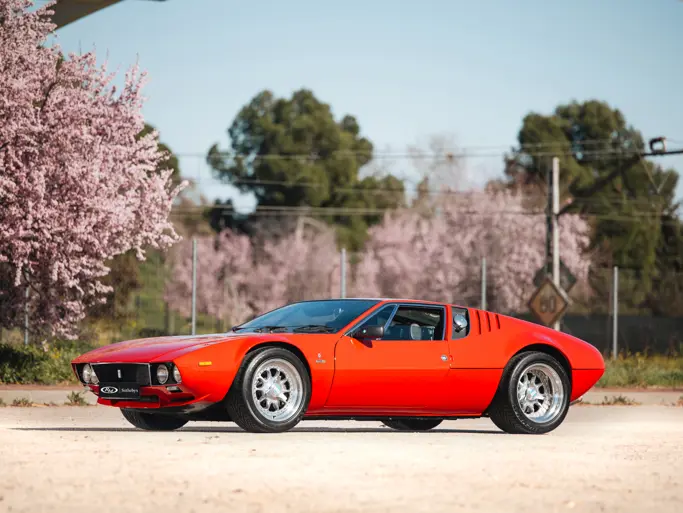Monaco 2014
1966 Ferrari 330 GT 2+2 Series II by Pininfarina
{{lr.item.text}}
€408,800 EUR | Sold
 | Monte Carlo, Monaco
| Monte Carlo, Monaco
{{internetCurrentBid}}
{{internetTimeLeft}}

- Ferrari factory restored and certified in its original colour combination
- Single ownership since 1989 and just two previous long-term owners
- Desirable and highly sought-after Series II example, complete with a full set of books and tools
- Perhaps the finest example of its kind in existence
- Ferrari Classiche certified
- Ferrari restaurée à l'usine et certifiée dans sa combinaison de couleurs d'origine
- Un seul propriétaire depuis 1989, et seulement deux propriétaires auparavant
- Désirable Série II, très recherchée, complète avec un jeu complet de manuels et d'outils
- Peut-être le plus bel exemplaire en existence
- Certificat Ferrari Classiche
300 bhp 3,967 cc SOHC V-12 engine, three Weber 40 DCZ/6 carburettors, five-speed manual gearbox, independent unequal length wishbone front suspension with coil springs, live rear axle with semi-elliptic leaf springs and coil springs over telescopic shock absorbers, and Dunlop dual-circuit four-wheel disc brakes. Wheelbase: 2,650 mm
Moteur V12, 3 967 cm3, 300 ch, 1 ACT par banc, trois carburateurs Weber 40 DCZ/6, suspension avant indépendante par triangles inégaux et ressorts hélicoïdaux, boite manuelle à 5 rapports, essieu arrière rigide avec ressorts semi-elliptiques et combinés ressorts/amortisseurs, freins à disques Dunlop sur les quatre roues, double circuit. Empattement: 2 650 mm.
Ferrari first allowed its 330 GT 2+2 to be shown to the public at its annual pre-season competition press conference in January 1964; after which, the model was shown near the end of the month at the Brussels Salon. The car’s exterior was designed by Pininfarina and it differed greatly from the earlier 250 GTE and 330 America, as it had an unusual four-headlamp nose that some believe was styled to attract American customers. Updates underneath were numerous and included a wheelbase that was 50 millimetres longer than the outgoing 250 GTE, Koni adjustable shock absorbers, and a Dunlop dual-circuit braking system, which gave both the front disc and rear disc brakes their own servo-assist.
Ultimately, the quad-headlight front end did not last long, and a second-generation 2+2, dubbed the Series II, was introduced halfway into the 1965 model year. This model introduced a dual-headlight nose, making the car appear much more similar to the 275 GTS. The body also gained different louvers for engine-bay ventilation on the nose, mimicking the design on the 275 GTS. Ten-hole cast alloy knock-off wheels were made standard, whilst the earlier Borrani wire wheels remained as options. The interior also saw minor changes, chief amongst which was a transmission tunnel connected to the central dashboard, which brought further changes in the dashboard switchgear location.
This Series II 330 GT 2+2 was produced in April 1966, wearing Argento (25090 A) over a Nero Franzi leather interior, and then it was delivered new to Vecar S.r.I., the official Ferrari dealer in Rome. Later that year, it was purchased by a Mr Johnson, an American living in Rome. Johnson sold the car one year later, upon his departure from Rome, to Felix Winterstein, a Swissair captain and resident of Kerzers, Switzerland, who retained the car for the next 22 years.
In September 1989, chassis 08496 was acquired by its current, and only its third, owner and his father, who together kept the 330 in very well-preserved and original condition. In 2009, twenty years after they purchased the car, it was decided that the 330 GT would be sent to Ferrari Classiche for a complete, concours-level restoration. Whilst everything was returned to as-new condition, originality was given high priority, and the majority of the 330’s original parts, including its extremely rare automatic Blaupunkt radio, have been retained. The car emerged from the Classiche department two years later, in a condition on par with the best examples of its kind, and it was issued a Certificate of Authenticity, which verifies that the car is just as original today as the day it left the factory in April 1966. Documentation accompanying this 330 includes the original warranty card, owner manual, spare parts manual, dealer locator book, a previous Swiss title from Felix Winterstein, the original tool bag, and its Ferrari Classiche binder, along with restoration receipts from Ferrari Classiche.
This 330 GT 2+2, which has been restored in its original colour combination, is described as being one of the finest examples, if not the finest, in existence, and it is ready for either the show field or the open road. Four-seater Ferraris have always proved to be excellent grandtouring cars for the whole family, and this example is not an exception to that rule. As it features a fresh restoration from Ferrari Classiche, it is completely reasonable to say that this splendid 330 GT is indeed “factory fresh”.
La Ferrari 330 GT 2+2 a été présentée pour la première fois lors de la conférence de presse annuelle qui précédait la saison de compétition, en janvier 1964 ; le modèle était ensuite dévoilé à la fin du mois au Salon de Bruxelles. Signé Pininfarina, le dessin de la voiture était nettement différent de celui des précédentes 250 GTE et 330 America, avec notamment une calandre quatre phares inhabituelle dont certain pensent qu'elle avait été imaginée pour attirer la clientèle américaine. Les modifications mécaniques étaient nombreuses et comportaient un empattement plus long de 50 mm par rapport à la 250 GTE, des amortisseurs Koni réglables et un double circuit de freins Dunlop, ce qui permettait aux disques avant et arrière d'avoir leur propre assistance.
Finalement, les quatre phares ne survivaient pas longtemps et une seconde génération, dite Série II, était présentée au milieu de l'année 1965. La calandre à deux phares qui équipait ce modèle le faisait paraître beaucoup plus proche de la 275 GTS. La carrosserie gagnait aussi à l'avant de nouvelles ouïes de ventilation imitant celles de la 275 GTS. Les jantes en alliage à serrage central et percées de dix orifices faisaient partie de l'équipement standard, les anciennes Borrani à rayons restant disponibles en option. L'habitacle connaissait lui aussi quelques changements, avec une connexion entre le tunnel de transmission et le tableau de bord, ce qui amenait quelques modifications dans la disposition des commandes.
Cette 330 GT 2+2 est sortie d'usine en avril 1966, peinte de couleur Argento (25090 A) avec une sellerie en cuir Nero Franzi. Elle a été livrée neuve à Vecar S.r.I., le distributeur Ferrari officiel à Rome, avant d'être vendue à M. Johnson, un Américain qui vivait à Rome. Un an plus tard, lors de son départ de Rome, Johnson cédait la voiture à Felix Winterstein, un capitaine de la compagnie Swissair résident à Kerzers, en Suisse, qui l'a conservée pendant 22 ans.
En septembre 1989, cette voiture portant le n° de châssis 08496 était acquise par son actuel propriétaire (le troisième seulement) et son père, qui ont gardé cette 330 dans un très bon état de préservation et d'originalité. En 2009, 20 ans après avoir acheté la voiture, ils ont décidé d'envoyer la 330 GT chez Ferrari Classiche pour une restauration complète, de haut niveau. Alors que tous les éléments retrouvaient un état quasiment neuf, un grande priorité était donnée à l'originalité et la majorité des pièces d'origine de la voiture, dont un autoradio Blaupunkt automatique extrêmement rare, étaient conservées. Deux ans plus tard, la voiture ressortait de chez Ferrari Classiche, dans un état identique aux meilleurs exemplaires de sa catégorie. Elle bénéficiait d'un Certificat d'Authenticité certifiant que la voiture était aussi originale que le jour où elle était sortie d'usine, en avril 1966. La documentation qui accompagne cette 330 inclut la carte de garantie d'origine, le manuel d'utilisation, le manuel de pièces détachées, le répertoire des distributeurs Ferrari, un ancien document d'immatriculation suisse venant de Felix Winterstein, la trousse à outils d'origine et le classeur Ferrari Classiche, avec les factures de restauration de Ferrari Classiche.
Cette 330 GT 2+2, qui a été restaurée dans ses combinaison de couleurs d'origine, est décrite comme une des plus belles, sinon la plus belle. Elle est prête pour tout concours d'élégance, ou pour se lancer sur la route. Les Ferrari à quatre places se sont toujours révélées d'excellentes grandes routières pour toute la famille, et cet exemplaire ne fait pas exception. Comme elle vient de bénéficier d'une restauration de Ferrari Classiche, il est tout à fait légitime d'affirmer que cette 330 GT « vient de sortir d'usine ».




